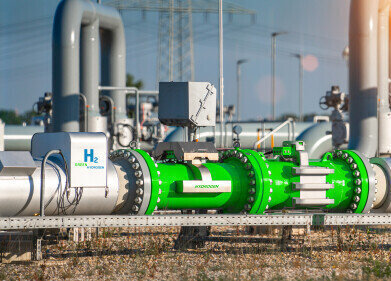Biofuel industry news
What Methods Are Used for Lubricant Quality Testing?
Feb 26 2022
Asset protection and condition monitoring solutions provider Bently Nevada describes lubricants as the “lifeblood of your machines”. This statement is spot-on and underscores the critical role lubricants play in maintaining efficiency, minimising unplanned downtime and maximising profits across a myriad of sectors and industries.
With such an important role to play, it’s no surprise lubricants are subject to in-depth quality testing. ASTM International, a global standards organisation used across a wide range of industries, publishes some of the most widely used and well-respected testing methods.
The role of ASTM International
Viscosity is one of the most important parameters used to determine lubricant quality. The ASTM D2422-97(2018) Standard Classification of Industrial Fluid Lubricants by Viscosity System is considered a benchmark when testing for this parameter. It can be applied to all petroleum-based fluid lubricants, as well as non-petroleum lubricant products. The method categorises samples into different kinematic viscosity grades ranging from 2 cSt to 3200 cSt (mm2/s).
Methods such as the ASTM D2422-97(2018) are used by lubricant manufacturers to determine viscosity and carry out quality control. ASTM D2422-97(2018) is also used by end users during acceptance testing assays.
Monitoring the quality of in-service lubricants
In addition to quality control and acceptance testing, lubricant assays form the backbone of industrial asset management strategies. For example, the ASTM D7684-11(2020) Standard Guide for Microscopic Characterization of Particles from In-Service Lubricants is used to detect debris and contaminants in circulating lubricants and hydraulic oils. Results allow operators to assess the health of mechanical assets and detect issues such as wear and corrosion before they result in unplanned downtime or catastrophic failure.
A new era of digital testing
Many conventional lubrication oil monitoring tests involve manual sample collection and testing at offsite laboratories. This increases the risk of human error and can lead to delays, which can leave assts vulnerable to issues such as corrosion and wear caused by abrasive particles.
Innovative digital lubrication oil monitoring systems such as VitalyX by Shell and Bently Nevada combine automated sensing technologies, cloud connectivity, data science and edge computing to offer a new era of lubrication oil monitoring. Sensors are used to measure critical parameters in real-time, with advance software systems used to combine the data and generate a in depth overview of lubricant quality and ultimately, asset health.
Want to know more about the critical role lubricants play across a wide range of industries? Don’t miss ‘A Complete Guide to Lubricants - Types, Quality & Testing’.
Digital Edition
PIN 26.1 Feb/Mar 2025
March 2025
Analytical Instrumentation - Elemental Analysis for Quality and Process Control at Refineries, for Lubricants and Wear Metals in Engine Oils - Synthetic Lubricants: New Developments - Scaling...
View all digital editions
Events
Apr 08 2025 Birmingham, UK
Apr 08 2025 Kielce, Poland
Apr 08 2025 Ravenna, Italy
Apr 08 2025 Southampton, UK
Apr 08 2025 London, UK



















